Baandam
Another of Chiang Rai’s more extraordinary sites, in a town that’s blessed with several rather eccentric attractions, is the highly unusual Baan Dam. Commonly known as the Black House it’s a park containing a diverse and sprawling series of buildings, displays, sculptures and installations, lying in Ban Du district a short hop north of town. The park and highly eclectic contents are the lifetime’s work of local and nationally renowned artist Thawan Duchanee.
Despite occasionally, and mistakenly, called the ‘Black Temple’ this is not a religious site and the themes are apparently more general commentaries on the human condition rather than Buddhist, or even unorthodox Buddhist, as per the White Temple. While bewildered, or to put it bluntly gob-smacked, tourists wander around trying to make head or tail of it all, according to those that know far more we do on the subject, the intention is to represent the darkness inside man!
It certainly is very dark – not just in the colour of the black, aged teak constructions that give the site it’s name – but clearly in atmosphere as well and the principal aesthetic signature is dead animal parts. Most buildings, regardless of whatever else they may display, are ‘decorated’ with cow and buffalo skulls and horns though you’ll also see elephant bones and tusks, what looked like an entire whale skeleton, plus tables and chairs clad in bear or leopard pelts. (These grim objects were of course simply collected, not created, by the artist.)
The buildings scattered across the well maintained and beautifully laid out parkland are equally a mixture with some modern, concrete constructions and some ancient Lanna style wooden designs. Each building, (though some are not open to the public), houses a series of installations of ancient and new, found and created objects interspersed amongst the animal skulls. Some are locally found or locally inspired while there’s African masks, Balinese and Burmese influences and plenty of unique creations and all the animal horns create a rather Nagaland feel. The grounds also include rock sculptures and menhir stone circles.
There’s no explanations – not even titles for the exhibits, in either English or Thai – but that did create a sociable side effect as dumbfounded visitors asked adjacent, equally bewildered ones what they made of it all. (Perhaps that was the intention?) Though creator Thawan Duchanee died in 2014 the largest, temple-like hall contains painting exhibitions with artists in residence though when we attempted to engage the current one in discussion as to the meaning of it all, he only seemed interested in Liverpool Football Club.
Entrance is free and we did glean that in his younger days Thawan Duchanee was apparently the family artist for the Sultan of Brunei who, if the story’s true, was so impressed with his work he recompensed him with a blank cheque on his return home to Chiang Rai. (Plus a couple of huge crocodile skins that you’ll notice amongst the displays.) An early, prototype Black House can still be seen in the downtown area behind Mercy Hostel though this isn’t open to the public and the park and constructions you see today in Ban Dun are the results of some 50 years labour.
The picturesque, grassy, shady park dotted with tall mature trees has a small lake at its foot; is almost a worthwhile destination in its own right and of course contrasts splendidly with the sombre installations though some do have a definite light-hearted side. It is very popular and easily rivals the ‘White Temple’ in visitors’ numbers so worth getting there early and allow at least an hour to see it all. (Don’t forget they do close between 12:00 and 13:00 too.) The small residential lane leading to the House has plenty of excellent, cheap cafes and coffee shops and there’s a tasteful souvenir shop in the large car-park.
To reach Baan Dam, head north out of town on route 1 past the airport and university. After passing the large Ban Dun market on your left look out for signs on the same side. It’s about 500m down a windy residential lane. Any north heading buses or songthaews out of Chiang Rai will drop you off or pick you up at the entrance to the lane on the main highway.
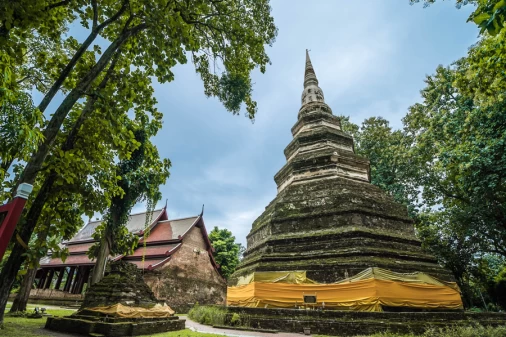
Chiang Saen
Once one of the major cities of the Lanna kingdom, it was originally called Wiang Hiran Nakhon Ngoen...
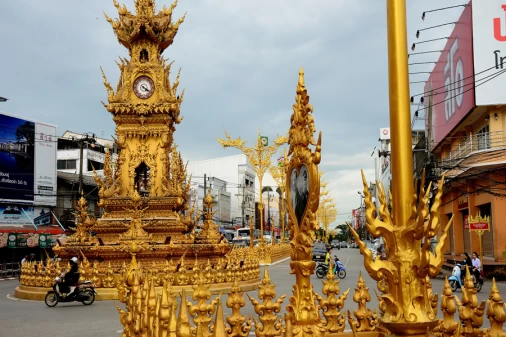
Clock Tower
When you look at all the travel guides and sites about Chiang Rai in Northern Thailand they always use...
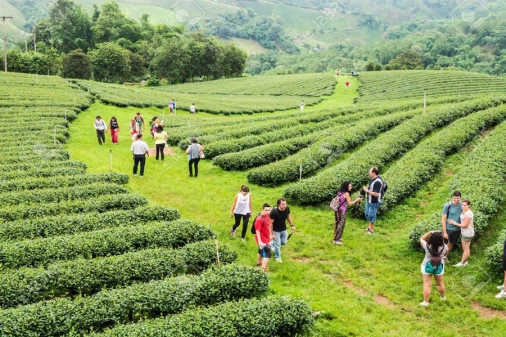
Doi Mae Salong
Mae Salong’s early history centred on the the opium trade of the Golden Triangle. Its recent history...
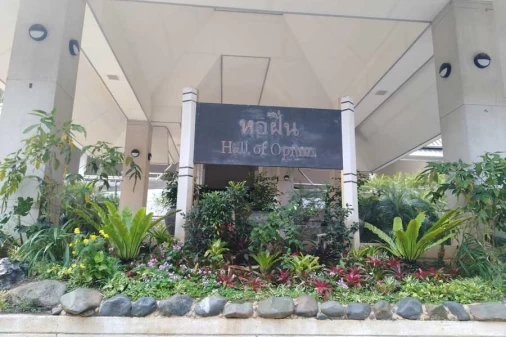
Hall of Opium
The Hall of Opium Museum is a combination of multimedia and exhibition to make learning more fun. Aiming...
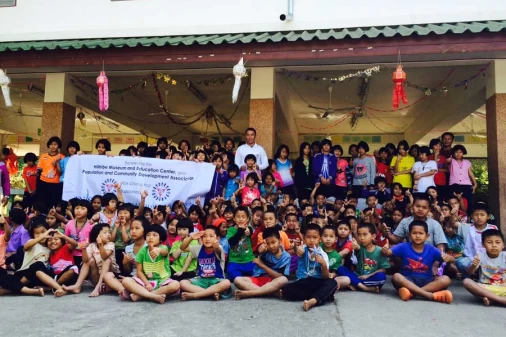
Hill Tribe Museum
Hilltribe Museum and Education Centre is run by a nonprofit organization called the Population and Community...
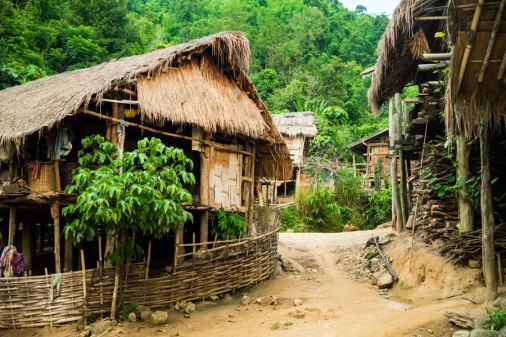
LaHu Village
Lahu people are to be found in the mountains of China, Myanmar (Burma), Laos and northern Thailand....
You may also like
The Best of Thailand 7 Days
- Depart Time:Daily
- Starts/Ends:Bangkok/Chiang Mai
- Tour type:Private Tours
- Travel Style:Nature & Adventure, Family Tours, Culture & History
- Activities:Sightseeing Tours, Local culture tours, Cultural, religious and historic sites tours, Countryside and village visits tours
- Suitable for:Solo, Family, Group, Couple
- Age range:1 To 90 Years
- Operated in:English, French, Spanish, German, Italian
Amazing Thailand 10 Days
- Depart Time:Daily
- Starts/Ends:Bangkok/Bangkok
- Tour type:Private Tours
- Travel Style:Nature & Adventure, Heritage Tours, Culture & History
- Activities:Sightseeing Tours, Local culture tours, Cultural, religious and historic sites tours, Countryside and village visits tours
- Suitable for:Solo, Family, Group, Couple
- Age range:1 To 90 Years
- Operated in:English, French, Spanish, German, Italian
Best of the North Thailand 11 Days
- Depart Time:Daily
- Starts/Ends:Bangkok/Chiang Mai
- Tour type:Private Tours
- Travel Style:Nature & Adventure, Family Tours, Culture & History
- Activities:Sightseeing Tours, Local culture tours, Cultural, religious and historic sites tours, Countryside and village visits tours
- Suitable for:Solo, Family, Group, Couple
- Age range:1 To 90 Years
- Operated in:English, French, Spanish, German, Italian
Romantic Thailand 13 Days
- Depart Time:Daily
- Starts/Ends:Bangkok/Bangkok
- Tour type:Private Tours
- Travel Style:Nature & Adventure, Family Tours, Culture & History
- Activities:Sightseeing Tours, Local culture tours, Cultural, religious and historic sites tours, Countryside and village visits tours
- Suitable for:Solo, Family, Group, Couple
- Age range:1 To 90 Years
- Operated in:English, French, Spanish, German, Italian
Thailand Family Holidays 14 Days
- Depart Time:Daily
- Starts/Ends:Bangkok/Bangkok
- Tour type:Private Tours
- Travel Style:Nature & Adventure, Family Tours, Culture & History
- Activities:Sightseeing Tours, Local culture tours, Cultural, religious and historic sites tours, City sightseeing tours
- Suitable for:Solo, Family, Group, Couple
- Age range:1 To 90 Years
- Operated in:English, French, Spanish, German, Italian
 France
France  Spain
Spain  German
German  Italian
Italian 






 Vietnam Tours
Vietnam Tours  Cambodia Tours
Cambodia Tours  Myanmar tours
Myanmar tours  Thailand Tours
Thailand Tours  Laos Tours
Laos Tours